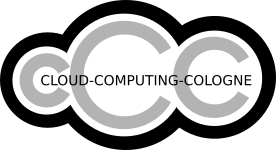When working with complex provider environments with many objects, the topology widget in Red Hat CloudForms can be extremely useful to quickly view and categorize information. The topology view provides the ability to view a container provider’s objects plus their details, such as the properties, status, and relationships to other objects on the provider. The topology view is also quite useful for showing cross-links between objects — all of which can be very difficult to visualize when only viewing an object’s summary page.
First introduced in CloudForms 4.0, the topology view was previously available only for containers providers. As of CloudForms 4.1, the topology view can also be used for network providers for viewing objects such as cloud subnets, floating IPs, and network routers:
In addition to topology view for network providers, CloudForms 4.1 also adds a search bar so that objects can be easily searched by name.
The topology view for containers is accessed through the Compute menu, by navigating from Compute > Containers > Topology. The network providers topology is accessed from Networks > Topology. In addition, you can access the topology view from the provider summary screen by clicking the icon in the Topology section.
Simplifying details with the Topology View
First of all, the topology view allows you to simplify information.
In the example below, the OpenShift Enterprise environment comprises multiple objects. It can be difficult to track down specific information, for example the OpenShift nodes. The topology view can assist in sorting out the objects to focus only on the relevant ones.
To view only the nodes, click each object except for Nodes in the top bar to toggle their display off. When the display is off for these objects, they appear greyed out. As a result, in the next screenshot, all you see are the container provider’s nodes:
Alternatively, you can also rearrange the topology diagram by dragging the objects into a manageable layout. For example, if you want to isolate one node and see its relationships, click on the node and pull it to one side of the topology map.
The following screenshot shows one node isolated from the rest, so you can easily see its relationships:
Searching with the Topology View
To make finding objects even simpler, Red Hat CloudForms 4.1 adds a search bar to the topology widget to allow you to search for an object by name. Search a name, and any unrelated objects are greyed out, so that only the objects you’ve searched for are highlighted.
In the following example, a search for the name “ruby-hello-world” reveals a container and a service by that name:
Note that you must cancel the search by clicking the X button before running your next search.
Identifying Relationships with the Topology View
Let’s say you wanted to find out which cloud network provider your floating IPs were attached to. Your network provider setup is fairly complicated, with many cross-linked relationships:
To make viewing your floating IPs much easier, hide the objects you aren’t interested in by clicking them on the top menu bar — in this case, hide everything but Floating IPs and Cloud Networks.
As a result, you can easily see that 10 of your floating IPs are attached to the cloud network on the left, 7 floating IPs are attached to the cloud network on the right, and one floating IP is not attached to any cloud network. If you want more details on which cloud network is connected to 10 floating IPs and which is connected to 7 floating IPs, you could find out more details by either hovering over the cloud network icons or double clicking on the icon to open a summary page. Right clicking on the icon brings up a dialog with additional actions you can perform on the item.
Troubleshooting with the Topology View
The topology view is also very useful for identifying objects that are not functioning properly, along with errors. Objects that are active and running correctly are displayed with a green outline, where objects with problems are outlined in red, and a grey outline signifies an unknown status. Let’s look at this containers topology example again:
This image shows four non-functional nodes. After identifying these nodes, you can find more information by either:
Hovering over the node: This will show the the object’s name, type (node), and its status.
Double-clicking on a node: This opens a summary page listing the node’s properties, labels, relationships, conditions, and Smart Management tags.
Toggling the Display Names checkbox: This shows all displayed objects’ names.
You can then quickly narrow down where there may be a problem, and troubleshoot from there.
For more information about working with these provider types, see the Red Hat CloudForms 4.1 Managing Providers guide:
For containers providers – see Chapter 5. Containers Providers
For network providers &8211; see Chapter 4. Network Providers
Quelle: CloudForms
